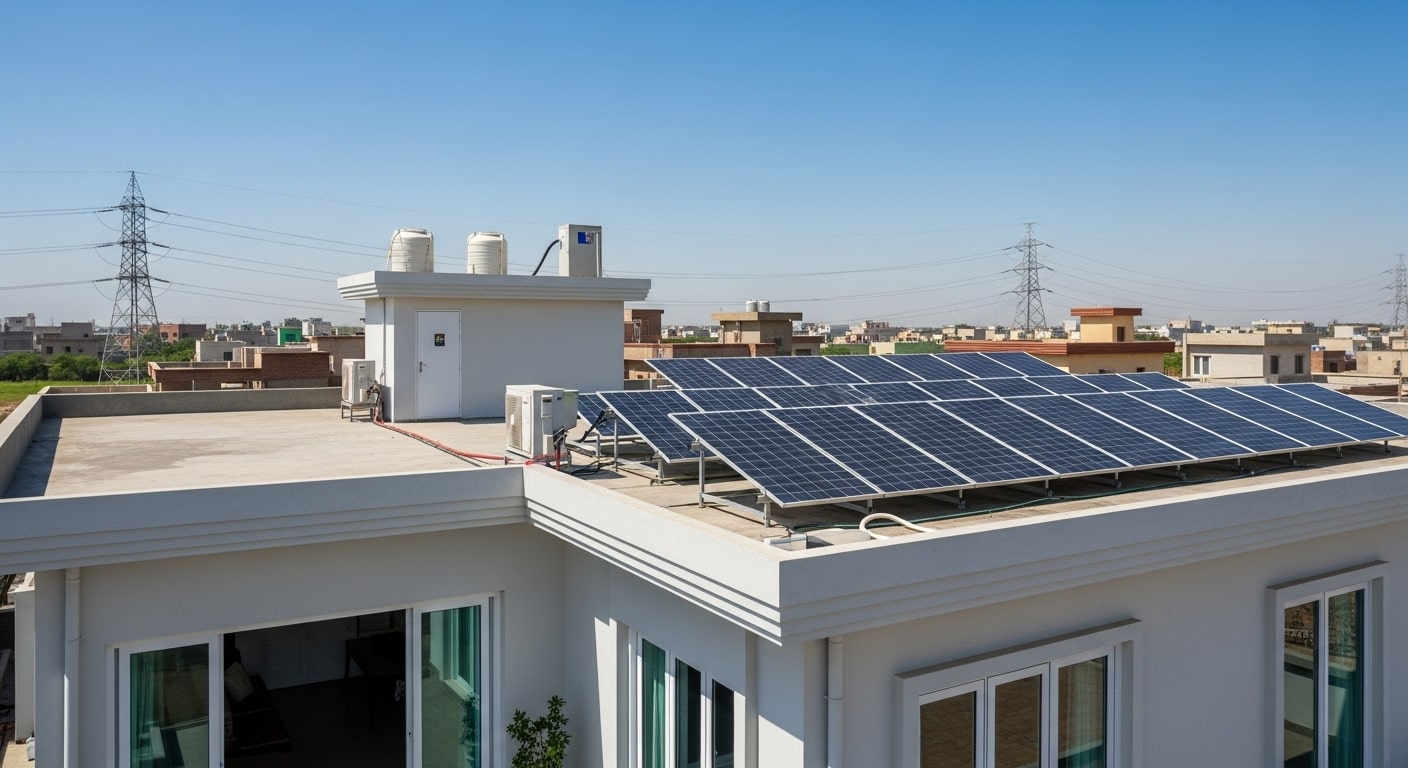
Introduction
Living in Pakistan, I’ve seen how rising energy demands push families and businesses to explore smart alternatives. One of the most reliable solar solutions I came across was the on-grid solar system, which connects solar panels directly to the electricity grid. This setup smartly balances electricity needs between solar energy captured from the sun during the day and grid electricity at night or when sunlight is low. While it doesn’t fully meet energy requirements on its own, especially during cloudy days, it effectively helps in harnessing clean power and reducing monthly bills.
When I got my own system installed, it was clear how well the on-grid solar system worked in real-time conditions in Pakistan. It allows power sharing between the solar panels and the electricity grid, making it easier to manage energy loads. I no longer worry during load shedding hours or when the weather shifts—my system automatically shifts power sources. If you’re thinking of managing your energy better, this system is a game-changer.

Article By Hamza Nawaz
I’m solar energy professional at Ocentra Engineering Services and founder of Tech Burst Solutions. With expertise in project management, PV system designing, and electrical technology.
What is an On-Grid Solar System?
Many people believe that solar systems always need batteries, but that’s not true. An on-grid solar system, also called a grid-tied solar system or grid-connected solar system, works without batteries. It connects to the electrical grid and uses solar panels to generate electricity during the day. The system can power your home or send extra power to the public utility grid.
At night time, or on cloudy days with low sunlight, the system simply draws electricity from the grid electricity to meet demand. There’s no need for battery storage, which makes it more cost-effective and helps you enjoy long-term cost-savings. Unlike off-grid solar systems that operate independently, this PV system gives better efficiency, reliable energy backup, and smart energy storage. It’s a practical choice for users who want clean, renewable energy without worrying about excess energy or high setup costs.
How On-grid Solar System Works in Pakistan?
In Pakistan, many homeowners and businesses are choosing an on-grid solar system because it is affordable, easy to install, and helps them save a lot of rupees on their monthly electricity bills. This system is connected to the grid station and works in different phases during the day. It is not like a hybrid grid solar system or an off-grid solar system, which can work without the grid.
The system works like this: solar panels are placed on the roof or any sunny spot. They convert sunlight into electricity. That electricity is in direct current (DC) form, so an inverter changes it to alternating current (AC), which can power your home or business. If the system generates more electricity than you use, the excess electricity is sent back to the grid using a net meter. If you use more power than the panels make, the grid will provide the additional electricity.
Advantages of Using an On-Grid Solar System in Pakistan:
Save Money on Your Electricity Bills
Using an on-grid solar system or grid-tied solar system is a smart way to save money in Pakistan. These systems generate electricity from the sun, which helps reduce your electricity bills. They are very economical because they don’t need battery storage.
An on-grid system also has lower upfront costs than off-grid systems because there’s no need to buy expensive battery storage. This really lowers the cost of the initial installation, making it a simple and affordable option for many people.
Reduce Your Carbon Footprint
Using grid-tie solar systems helps make a cleaner environment. When you use solar panels and start switching to solar energy, your home or office starts to emit almost zero percent greenhouse gases. This makes the system more environmentally friendly compared to using polluting sources of electricity.
Since solar energy is a renewable energy, it helps you rely less on fossil fuels. This also helps cut carbon emissions, lessen dependency on harmful fuels, and preserve the environment. It’s a great step toward a safer and healthier future.
Make You Energy Independent
An on-grid solar system helps you become energy independent. It allows you to rely less on the grid, especially during the day time. When the solar panels are working, they use sunlight to make electricity, which powers your home or business. This means you get your energy from the sun during the day instead of fully depending on the main grid.
Benefits of Net Metering
With net metering, customers can sell extra electricity back to the grid. When your solar system makes more excess energy than you use, it is fed back to the utility company. In return, you get credits which help reduce your future electricity costs.
In many regions, this service is offered to every user who has an on-grid system. You can earn credits or even payments, which helps in reducing your electricity bills. Net metering is a smart way to save money while using solar power.
Disadvantages of Grid-Tie Solar System
Dependence on the Grid
One main problem with grid-tie systems is their strong dependence on the grid. These on-grid systems are connected to the utility grid and rely on it to work. If there is a power cut or the grid has breakdowns or outages, the system is unable to function.
This means it won’t provide power unless you have a battery backup installed. So, in areas with frequent load shedding or power cuts, this grid dependence can be a big issue.
No Backup Power
One issue I’ve noticed with grid-tie systems is that they fully rely on the grid to supply electricity. This becomes a big concern during grid outages, especially in remote areas where erratic grid connections are common. Without battery storage, these systems cannot provide power when the grid is down, which restricts their application in places that need continuous electricity.
Summary
On-grid solar systems are a compelling solution for people who want to live a more sustainable life. These systems are connected to the utility grid, so you use clear energy from the sun during the day, and if needed, you still have reliability from the grid.
Many homeowners and businesses choose this system because it offers many benefits. It runs on renewable energy, which is good for the environment and creates a positive impact on the planet. If you want to save money and help the earth at the same time, an on-grid solar system is a great choice.
